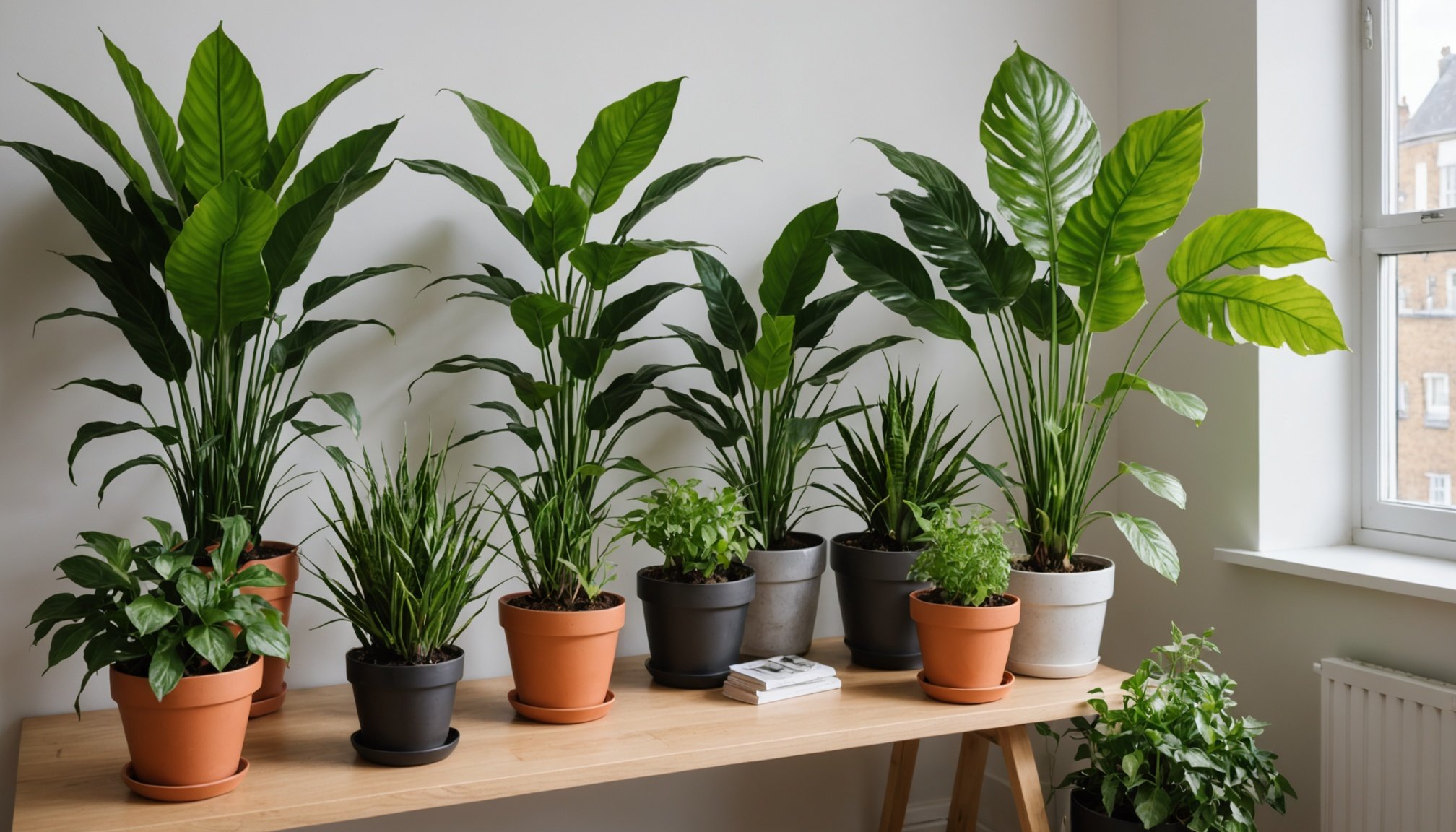Understanding Seasonal Allergies and Indoor Plants
Seasonal allergies can be a significant concern for many residents of London, particularly when compounded by indoor allergens. It’s crucial to understand the common allergic reactions that can be triggered by seemingly harmless indoor plants. For example, certain plants may release pollen, dust, or mould when not properly maintained, exacerbating typical allergy symptoms.
In London, specific seasonal allergies become more pronounced, especially during the spring and summer months. During these times, pollen levels are at their highest, and residents may find themselves more susceptible to symptoms like sneezing, itchy eyes, and nasal congestion. However, indoor environments can also contribute to these issues, particularly if plants that produce allergens are present.
Also to discover : Maximizing Space: Top Strategies for Organizing Digital Home Entertainment in a Cozy Swansea Flat
Indoor plants, while popular for their aesthetic appeal and benefits, can impact allergy symptoms if not carefully selected. It’s important to opt for low-allergen or hypoallergenic plants to maintain a comfortable indoor environment. Plants with minimal pollen and dust production, such as certain succulents or ferns, are preferred choices for managing and reducing the severity of indoor allergy symptoms. By understanding the relationship between seasonal allergies and indoor plants, London residents can make informed choices to alleviate discomfort in their homes.
Choosing Low-Allergen Indoor Plants
Selecting the right indoor plants can greatly influence seasonal allergies and maintain a comfortable home environment. Low-allergen plants are those that release minimal pollen or dust, making them ideal for allergy sufferers. When considering plant selection, look for hypoallergenic indoor plants like the peace lily, bamboo palm, or spider plant, which are known for their air-purifying properties and low pollen levels.
Topic to read : Ultimate Guide to Waterproofing Your Basement: Top Strategies for UK Homes
Listing of Hypoallergenic Plants
- Peace Lily: Minimal pollen production and helps in filtering indoor air.
- Bamboo Palm: Effective in removing indoor air pollutants and low maintenance.
- Spider Plant: Known for reducing airborne toxins with minimal allergen output.
These plants not only enhance air quality but also add a touch of greenery without exacerbating allergy symptoms.
Researching Plant Varieties
Before purchasing, research is crucial to ensure that the selected plants suit your needs. Use resources such as gardening books or reputable online platforms to identify hypoallergenic plant options. Local nurseries in London often stock a variety of low-allergen plants; visiting these can provide insights into suitable choices and expert advice.
Maintenance Practices to Reduce Allergens
Effective plant care is essential for reducing allergens indoors. One of the simplest yet most impactful actions is establishing a regular cleaning routine for indoor plants. This involves gently wiping leaves with a damp cloth to remove dust and pollen that accumulate over time, reducing airborne allergens.
Maintaining a healthy atmosphere involves using non-toxic cleaning agents to ensure that the plants and indoor air remain free from harmful chemicals. It’s advisable to use water or mild soap solutions for cleaning leaves and pots since harsh substances can harm plants and inadvertently release fumes that might aggravate allergy symptoms.
An often overlooked but crucial aspect of allergen reduction is controlling indoor humidity levels. High humidity can promote mould growth, which is a common allergen. To combat this, maintaining at a moderate humidity (about 40% to 50%) using dehumidifiers and ensuring proper ventilation through windows or fans can help keep allergens at bay.
Finally, the placement of plants plays a critical role. Avoid clustering too many in small spaces and ensure that they are not obstructing air vents, as doing so can limit airflow and exacerbate allergy symptoms. Proper care not only helps in maintaining greenery but also ensures a healthier indoor environment.
Improving Indoor Air Quality
Creating a balanced indoor environment is crucial for managing allergens and enhancing overall indoor air quality. One effective strategy is using air purifiers, which are instrumental in capturing airborne pollutants and allergens. For apartment living, HEPA filters are highly recommended due to their capacity to capture particles as small as 0.3 microns. Regular maintenance, including timely filter changes and cleaning, is essential to ensure these systems operate efficiently.
Enhancing natural airflow is another viable approach to reducing indoor allergens. Adequate ventilation, achieved by frequently opening windows or installing fans, helps in circulating fresh air, which is particularly beneficial in a London apartment where space might be limited. Additionally, monitoring and managing indoor humidity using dehumidifiers can prevent mould growth, a common allergen in humid conditions.
Some indoor plants also contribute to purifying air by filtering toxins and releasing oxygen. Plants such as the snake plant, English ivy, and bamboo palm are known for their air-purifying abilities. These should be strategically placed near air vents or in areas with limited airflow to maximise their impact. By integrating these practices, one can significantly improve the quality of indoor living spaces while mitigating allergy symptoms.
Seasonal Allergy Relief Strategies in London
When seasonal allergies peak in London, it’s paramount to adopt effective strategies for relief. Spring and summer months typically bring high levels of pollen, leading to symptoms like sneezing and nasal congestion. Understanding this timing helps in planning preventive measures.
To manage allergy symptoms, ensuring a clean and allergen-free living environment is crucial. This might involve frequent cleaning to eliminate dust and allergens. Using a vacuum cleaner with a HEPA filter can be highly effective, as it captures small particles that regular vacuums might miss. Regular laundering of bed linens and curtains also greatly aids in reducing allergens.
Indoor plants play a substantial role in managing symptoms. As previously discussed, selecting hypoallergenic indoor plants can support a healthier indoor space. It’s helpful to keep windows closed during peak pollen times while running air purifiers to maintain indoor air quality.
Finally, dietary measures can offer some relief. Increasing consumption of anti-inflammatory foods—such as fruits rich in Vitamin C and Omega-3 fatty acids—can naturally reduce inflammation and alleviate certain symptoms. By implementing these strategies, London residents can better manage seasonal allergies and enjoy improved indoor comfort.











